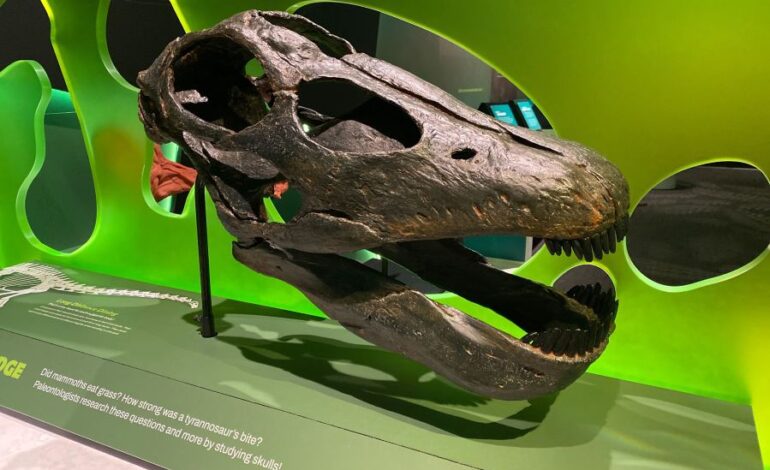Dinosaur Teeth Uncover Secrets of Ancient Life in Texas

A recent study conducted by researchers at the University of Texas has provided new insights into the diet and behavior of dinosaurs that roamed the Earth during the late Jurassic period. By analyzing tiny particles found within dinosaur teeth, the study sheds light on the feeding habits of these ancient creatures.
Dr. Liam Norris, a paleontologist at the Texas Science and Natural History Museum, led the research, which focused on five sets of dinosaur teeth collected from the Carnegie Quarry at Dinosaur National Monument in Utah. The research, recently published in the journal Palaeogeography, Palaeoclimatology, Palaeoecology, offers a comprehensive look at the diets of both herbivorous and carnivorous dinosaurs from this era.
Understanding Dinosaur Diets
Dinosaur teeth play a critical role in understanding their diets, as these creatures replaced their teeth throughout their lives, much like modern-day sharks and crocodiles. “When we eat food, the calcium in that food is incorporated into our skeleton,” Norris explained. This method allowed Norris and his team to connect calcium isotopes from the teeth with fossilized plant samples, revealing not only what these dinosaurs consumed but also how they fed.
The study examined teeth from several species, including the long-necked herbivores Diplodocus and Camarasaurus, as well as the plant-eating Camptosaurus and the carnivorous Allosaurus and Eutretauranosuchus. For instance, the teeth of the Diplodocus suggest that it fed on both ground-level vegetation and foliage from trees, while the Camarasaurus likely consumed tougher materials such as twigs and bark.
Herd Behavior and Dietary Preferences
The research also provides insight into the social dynamics of these dinosaurs. They traveled in herds and each species targeted different types of plants, allowing them to coexist without direct competition for food. While previous studies suggested that these dinosaurs occupied different levels of the canopy, Norris’s findings indicate that they also had specific plant preferences within those heights.
Interestingly, the study revealed that the Allosaurus, the predominant carnivore of its time, consumed herbivores but avoided eating their bones. “Allosaurus was probably coming up to these animals and just tearing the flesh off the bone,” Norris noted, underscoring the predatory behavior of this dinosaur.
The Eutretauranosuchus, a large crocodile-like creature, likely had a diet consisting primarily of fish, although fewer samples were available for analysis. In total, the research encompassed teeth from 17 individual animals across the five species studied.
Norris highlighted a significant aspect of dinosaur biology: they could not chew their food. Instead, they swallowed it whole, allowing it to pass into a gizzard, similar to the digestive system of modern chickens. This unique adaptation has implications for understanding how these ancient giants processed their food.
For Norris, this research contributes to the broader narrative of paleontology, challenging the notion that all major discoveries have already been made. “In a way, this research has added to the story of evolution, and thus our origin story,” he stated.
As scientists continue to unlock the mysteries of the past, studies like this one provide invaluable insights into the lives of dinosaurs and their interactions with the environment, paving the way for a deeper understanding of our planet’s history.






